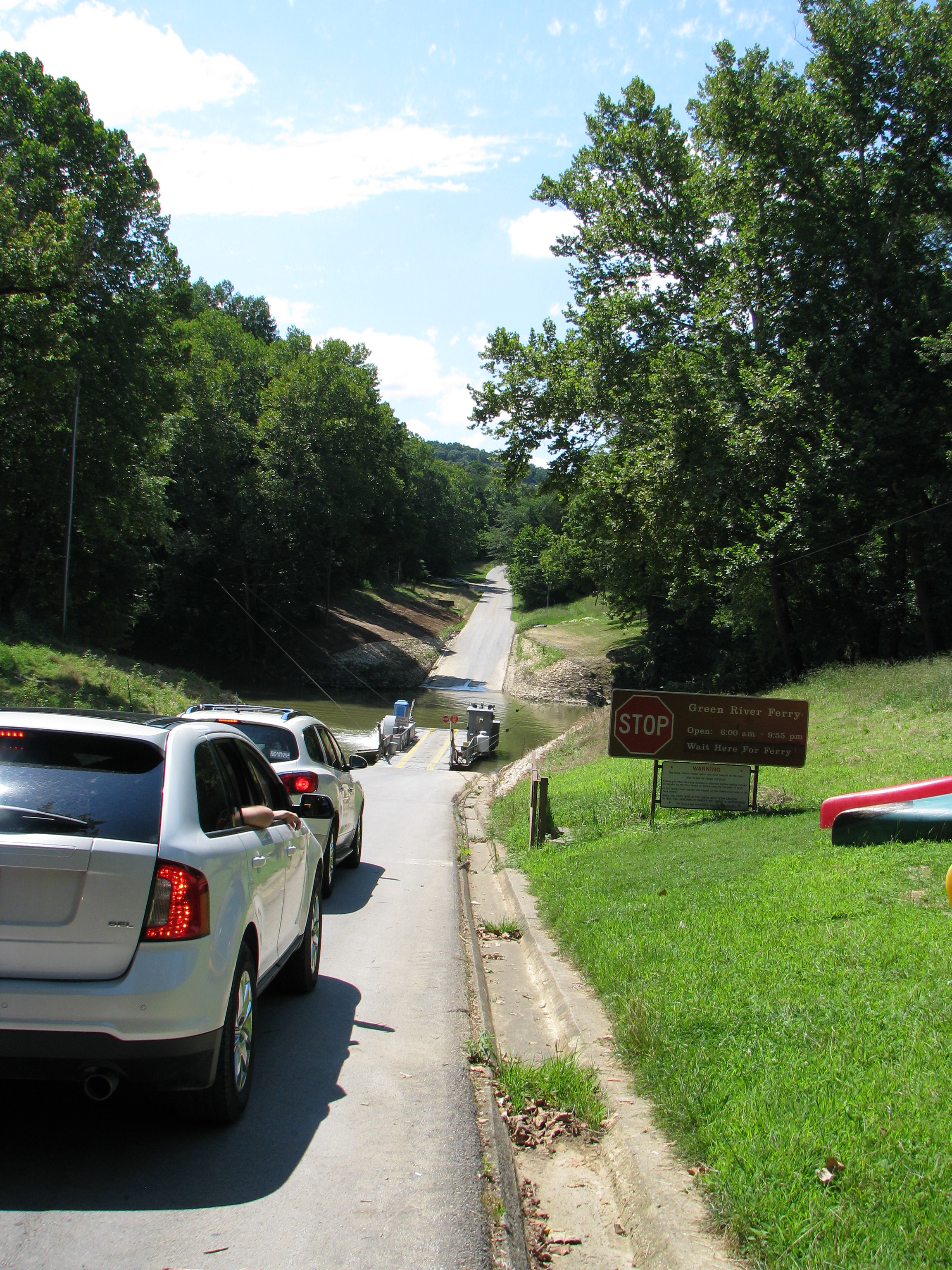Mammoth Cave National Park, Kentucky (July 2013)
While visiting Mammoth Cave National Park — and with an interest in ferries already — a slight detour to the Green River Ferry seemed in order. It was easy. The ferry can be found southwest of the Visitor Center. Drive out of the Visitor Center on the Mammoth Cave Entrance Road to the south and turn right onto Green River Ferry Road after about a mile. The turnoff is well-signed. Go another mile-or-so heading west until approaching the ferry.
It will be impossible to miss. A driver simply cannot go any farther along this road without hitting the ferry or the water. The total drive time from the Visitor Center to ferry should last no more than five minutes or so.
This ferry crossing could not have been easier to find or more convenient.
- See directions in a Google Map.
- Alternately, the latitude/longitude coordinates for a GPS are 37.179501,-86.112049
There is another river crossing in Mammoth Cave National Park farther downstream called Houchin Ferry. Our intent was to cross the Green River using both ferries, one on the outward trip and the other on the return trip. Unfortunately the Houchin Ferry was closed in the Summer of 2013 due to the Federal government’s sequestration budget cuts.
We knew in advance because we called the park’s Ferry Hotline. Ordinarily that number would be used during periods of exceptionally high or low water. I guess we can add budget cuts to that list as well.
The Green River

The Green River runs through much of southwestern Kentucky and is a tributary of the Ohio River. The name seemed appropriate too, judging by the color of the water flowing past the ferry. Mammoth Cave was formed by water destined for the Green River, and in fact, water at the bottom of the cave percolates through layers of limestone (forming more cave) before draining into the Green River.
There are tours of Mammoth that go to the bottom level of the cave, all the way down to the water table and the underground rivers. Standing next to those pools deep within the bowels of the earth makes it difficult to imagine that they are nothing more than streams feeding into the Green River and flowing all the way to the Gulf of Mexico.
Traveling

In the early 20th Century it was possible to navigate a boat with a 5 foot-draft all the way upstream to Mammoth Cave because of a series of locks and dams, some of which have subsequently been removed. Even so, a typical Mammoth Cave visitor would have arrived by railroad in the early 20th Century rather than by boat, before being replaced by automobile traffic. Cars needed these little ferries when roads were still sparse and primitive.
Crossing

I’ve taken rides on several ferries and this one may have been the smallest boat of all. The maximum capacity seemed to be about three decent-sized automobiles. The ride itself may have also been the shortest, lasting all of maybe thirty seconds. The price was equally appropriate — Free!
I’m not sure why a ferry exists here other than as a quaint anachronism within a public park. Surely, this short and narrow stretch of river would have had a bridge crossing long ago if it were located anywhere else other than a park. The ferryboat was about half the width of the river!
It was a pleasant enough ride and the wait didn’t last long so we were happy to enjoy it for what it was. Sit back, relax, open a window, absorb the view and don’t over-think it.
Readers who have an interest in ferries might also want to check my Ferry Index page.

Leave a Reply